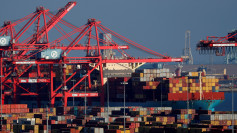Japan is protesting the deployment by Russia of a surface-to-air missile system on the island of Etorofu that was occupied by the Soviet Union at the end of World War Two.
Chief cabinet secretary Katsunobu Kato said Japan lodged a diplomatic protest after Russia said earlier this week it had deployed long range surface-to-air missiles on Etorofu - off the coast of Hokkaido in northern Japan.
The missiles have a range of 400 kilometers at Mach 7.5 (9,300 kilometers an hour) and 350 kilometers at Mach 9. At both speeds, the missile can destroy warplanes at high-altitudes.
The missile - the most widely deployed Russia surface-to-air weapon - is regarded as one of the most potent of its kind despite having been introduced in 1979.
"Short-range anti-aircraft missile systems are already on duty on the island of Iturup in Sakhalin Region," according to an announcement from national TV network Zvezda owned by the Ministry of Defense.
It is unclear why Russia chose to deploy missiles so close to Hokkaido. This island, however, is the site of Chitose Air Base, Japan's primary base in northern Japan.
The base, which is more than 550 kilometers from Etorofu, is responsible for monitoring Japan's maritime borders with Russia. Warplanes from Chitose are now at risk during surveillance missions over Japan's northern territories and off Russia's Sakhalin Peninsula to the northwest and the Kamchatka Peninsula to the northeast.
Japan is sensitive to military moves by Russia on the Kuril Islands that stretch northeast from Hokkaido to Kamchatka.
In October, Russia said it planned to deploy the missile system on Etorofu but said the deployment was for a temporary military exercise.
Russia has deployed fighters and anti-ship missiles on Etorofu as part of a military buildup.
Etorofu and Kunashiri islands are in the Kuril chain claimed by Japan. Along with Shikotan and Habomai islets, these pieces of real estate are called Japan's Northern Territories.






